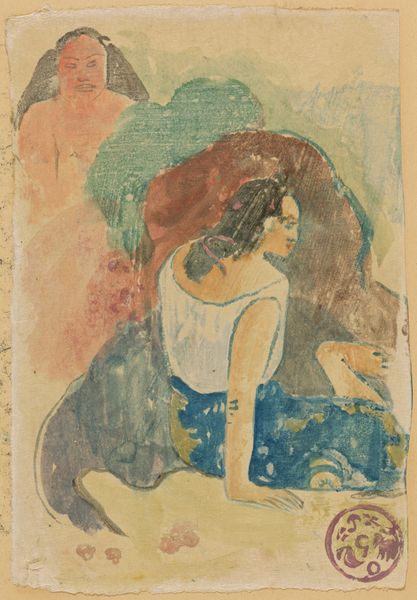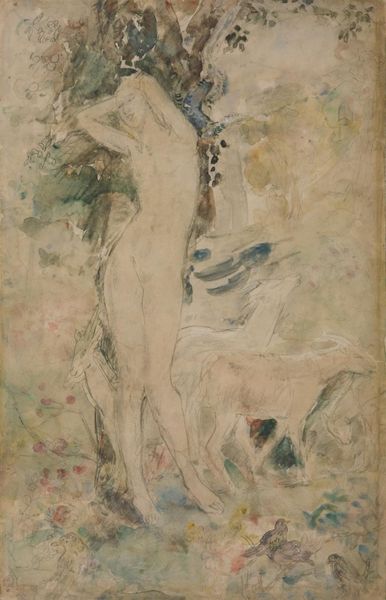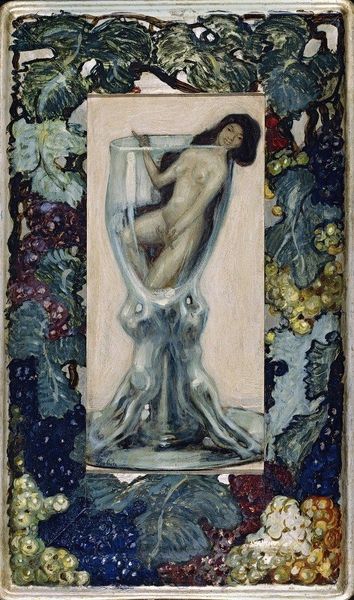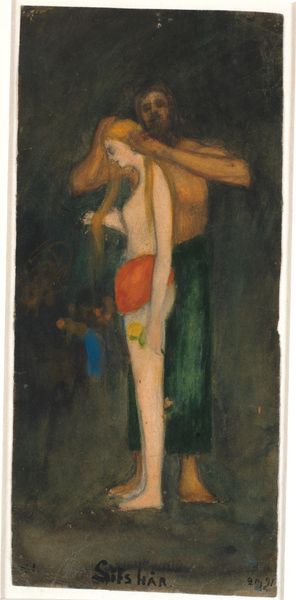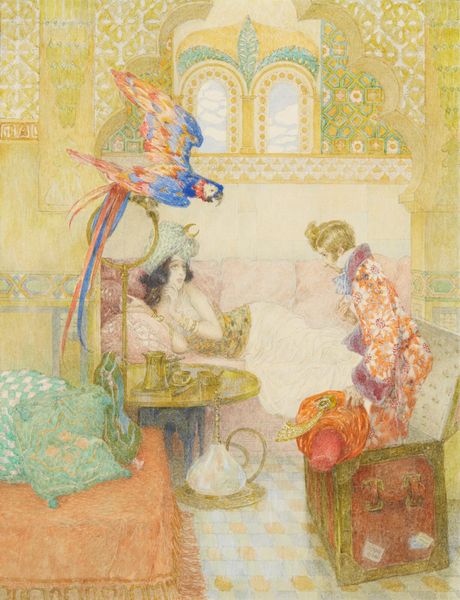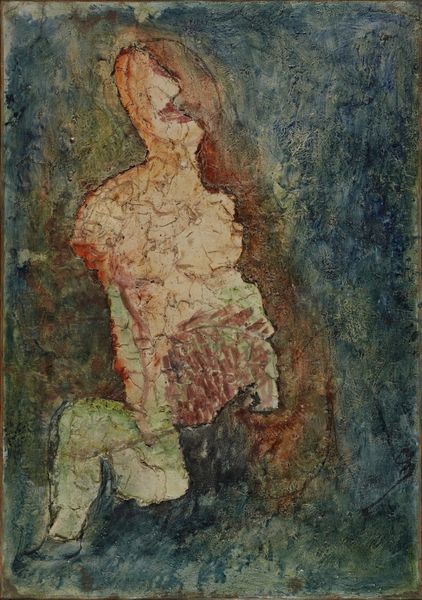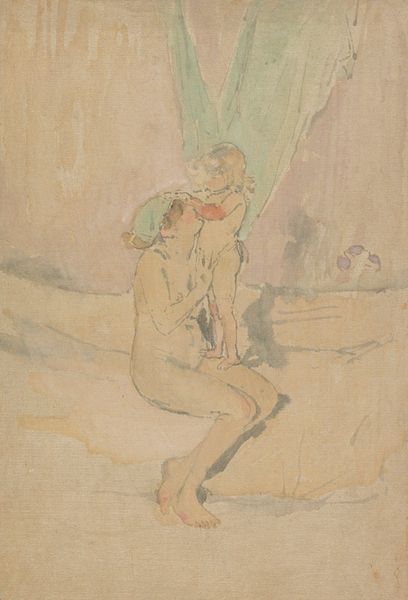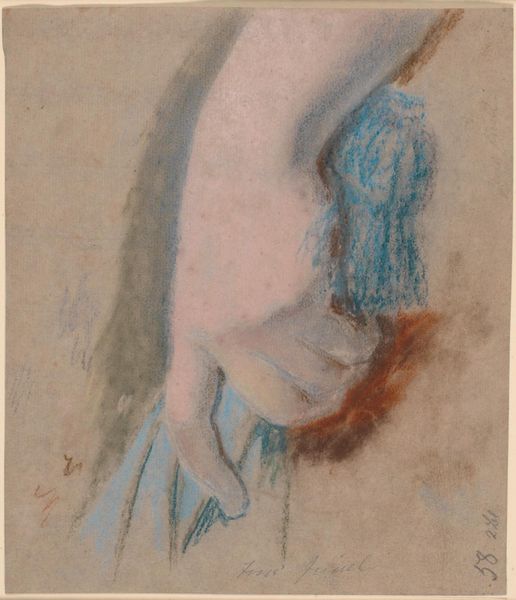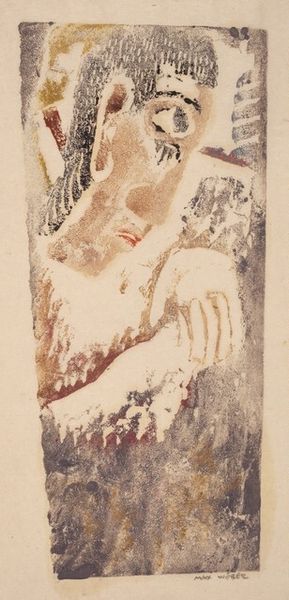
painting, watercolor
#
portrait
#
figurative
#
painting
#
landscape
#
figuration
#
oil painting
#
watercolor
#
post-impressionism
#
watercolor
Copyright: Public Domain: Artvee
Curator: We’re looking at Paul Gauguin's "Pape moe," made around 1893, using watercolor, it seems. Quite small, very sketch-like. Editor: It does feel immediate, like a field sketch. A nude figure seems caught mid-motion, amidst a dreamy, abstracted landscape. All those pale blues, pinks, the bare paper... it feels both ancient and ethereal. Curator: Note the ambiguity in form, especially surrounding the figure. The pose almost suggests a ritual act, or perhaps something as mundane as drawing water. The colors reinforce this blending of mundane and spiritual. Gauguin was, of course, deeply invested in ideas of primitivism and portraying an “authentic” indigenous life. Editor: Authentic as seen through a colonial lens, right? I’m curious about his materials here – using watercolor allowed for a certain fluidity, speed, a perceived lack of the “labor” of a more academic painting in oil, but the effect, intentionally or not, obscures the complicated reality of this period. What would a Tahitian watercolor look like, made with local materials? How different? Curator: An excellent point. Gauguin consistently framed Polynesian culture as embodying innocence, yet here the image includes visual indicators pointing toward deeper cultural frameworks, like the suggestion of hieroglyphs toward the bottom, which recall images found on monuments. The work seems interested in unveiling the unseen spiritual dimensions. Editor: Yet the very choice of watercolor, the rapid gesture… it’s inherently about a Western, specifically French, mode of seeing. Gauguin romanticized artisanal life even while utilizing industrialized colors, processed paper, manufactured abroad. What’s absent—the story of those production processes, the access he had—speaks loudly, too. Curator: So the imagery is almost undermined by the very materials of its making? Interesting thought, challenging his vision to be sure. Editor: It’s a challenge rooted in material reality. By focusing on process, and the cultural politics inherent to tools and labor, we complicate this story of idyllic simplicity, inviting a fuller accounting of this complicated history. Curator: True enough. A valuable thing to remember. It leaves me seeing the image now, perhaps for the first time. Editor: Right, a different image altogether, one steeped in social relations.
Comments
No comments
Be the first to comment and join the conversation on the ultimate creative platform.
